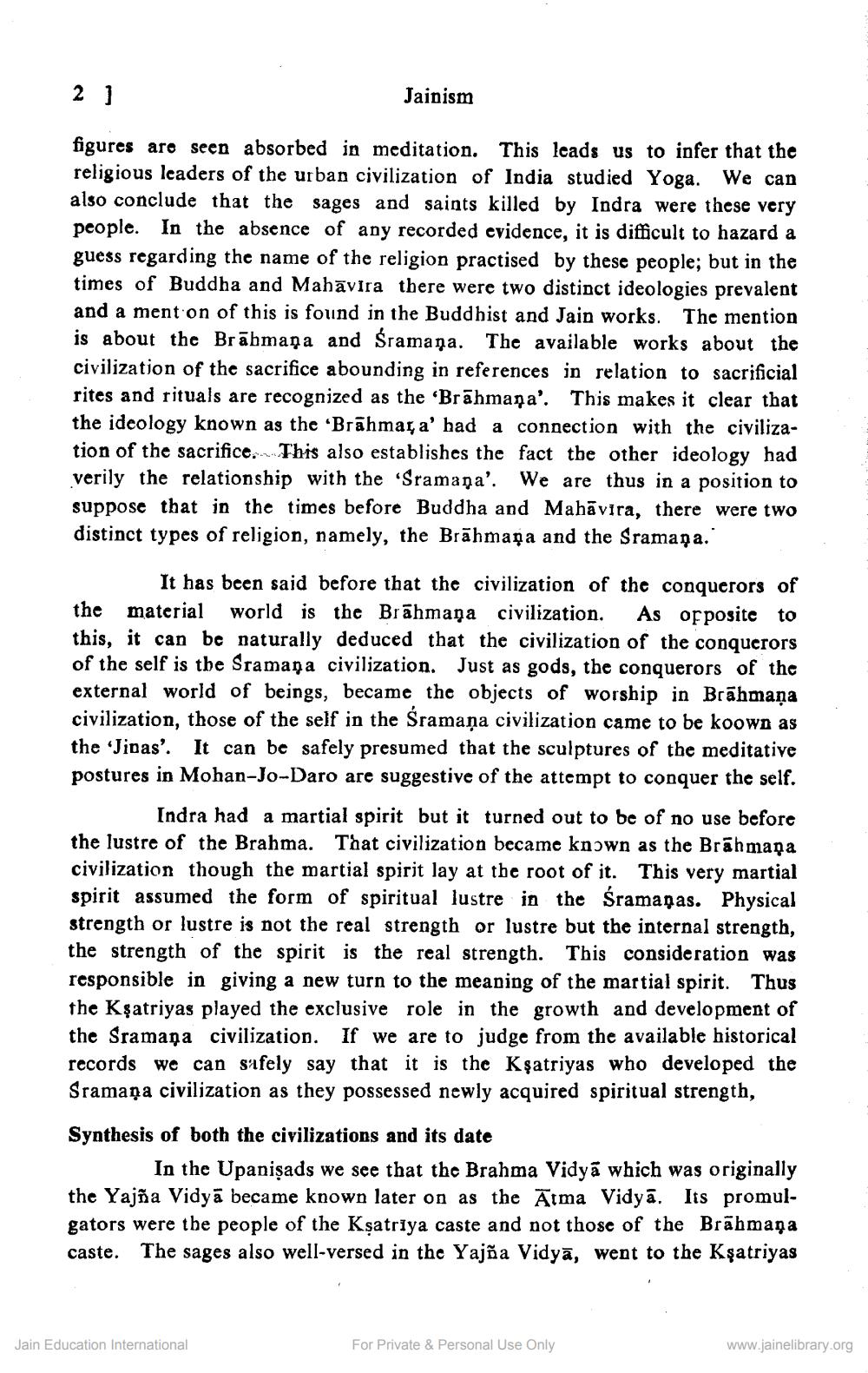Book Title: Jainism Some Essays Author(s): A S Gopani Publisher: Prakrit Bharti Academy View full book textPage 9
________________ 2 ] Jainism figures are seen absorbed in meditation. This leads us to infer that the religious leaders of the urban civilization of India studied Yoga. We can also conclude that the sages and saints killed by Indra were these very people. In the absence of any recorded evidence, it is difficult to hazard a guess regarding the name of the religion practised by these people; but in the times of Buddha and Mahāvira there were two distinct ideologies prevalent and a mention of this is found in the Buddhist and Jain works. The mention is about the Brāhmaṇa and Śramaņa. The available works about the civilization of the sacrifice abounding in references in relation to sacrificial rites and rituals are recognized as the 'Brāhmaṇa'. This makes it clear that the ideology known as the 'Brāhmar a' had a connection with the civi tion of the sacrifice. This also establishes the fact the other ideology had verily the relationship with the 'Sramana'. We are thus in a position to suppose that in the times before Buddha and Mahāvira, there were two distinct types of religion, namely, the Brāhmana and the Sramana. It has been said before that the civilization of the conquerors of the material world is the Brāhmaṇa civilization. As opposite to this, it can be naturally deduced that the civilization of the conquerors of the self is the Sramana civilization. Just as gods, the conquerors of the external world of beings, became the objects of worship in Brāhmaņa civilization, those of the self in the Sramaņa civilization came to be koown as the 'Jipas'. It can be safely presumed that the sculptures of the meditative postures in Mohan-Jo-Daro are suggestive of the attempt to conquer the self. Indra had a martial spirit but it turned out to be of no use before the lustre of the Brahma. That civilization became knɔwn as the Brāhmana civilization though the martial spirit lay at the root of it. This very martial spirit assumed the form of spiritual lustre in the śramanas. Physical strength or lustre is not the real strength or lustre but the internal strength, the strength of the spirit is the real strength. This consideration was responsible in giving a new turn to the meaning of the martial spirit. Thus the Ksatriyas played the exclusive role in the growth and development of the Sramana civilization. If we are to judge from the available historical records we can safely say that it is the Ksatriyas who developed the Sramaņa civilization as they possessed newly acquired spiritual strength, Synthesis of both the civilizations and its date In the Upanisads we see that the Brahma Vidya which was originally the Yajña Vidyā became known later on as the Ārma Vidyā. Its promulgators were the people of the Ksatriya caste and not those of the Brahmaņa caste. The sages also well-versed in the Yajña Vidyā, went to the Ksatriyas Jain Education International For Private & Personal Use Only www.jainelibrary.orgPage Navigation
1 ... 7 8 9 10 11 12 13 14 15 16 17 18 19 20 21 22 23 24 25 26 27 28 29 30 31 32 33 34 35 36 37 38 39 40 41 42 43 44 45 46 47 48 49 50 51 52 53 54 55 56 57 58 59 60 61 62 63 64 65 66 67 68 69 70 71 72 73 74 75 76 77 78 79 80 81 82 83 84 85 86 87 88 89 90 91 92 ... 156
